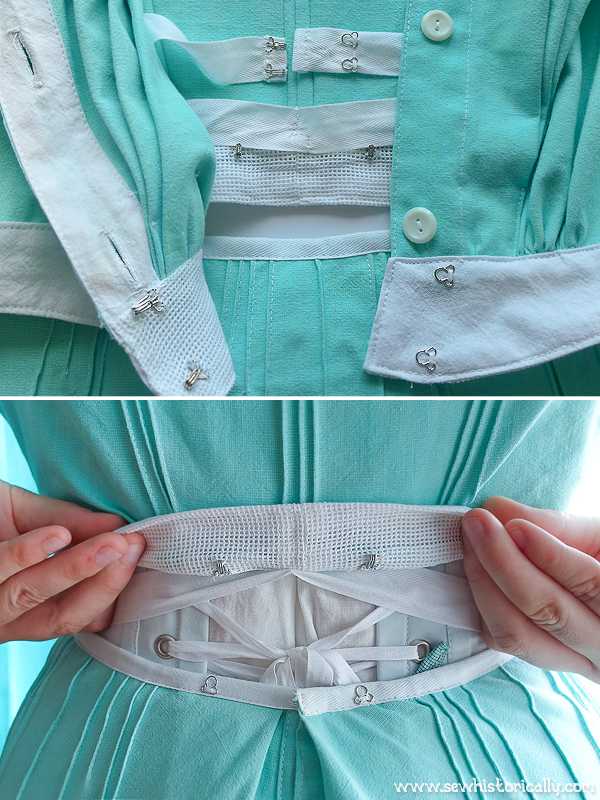
The Edwardian era is my favorite historical era at the moment 😀 and also the era I know the most about. I try to make all my Edwardian clothes as historically accurate as possible using Edwardian sewing techniques. So I thought I’d write a list about popular Edwardian sewing details and why they were used. I’ll update the post from time to time when I find new Edwardian sewing techniques – so stay tuned!
10 Edwardian Sewing Details + Why They Were Used
Inverted Box Pleat
Almost all Edwardian skirts had an inverted box pleat at the center back. If a skirt didn’t have an inverted box, it was usually a petticoat (underskirt). The inverted box pleat could be left free or could be stitched down – then it was called a habit back.
The inverted box pleat was used to add volume to the bottom of the skirt while still keeping the skirt fitted at the hip for a fashionable Edwardian silhouette.
Deep Hem & Hem Stiffening
Edwardian cotton skirt usually had deep hems and wool skirts had some sort of hem stiffening like hair cloth: This added weight so the skirt hangs better. And it also stiffened the hem of the wide flaring Edwardian skirts.
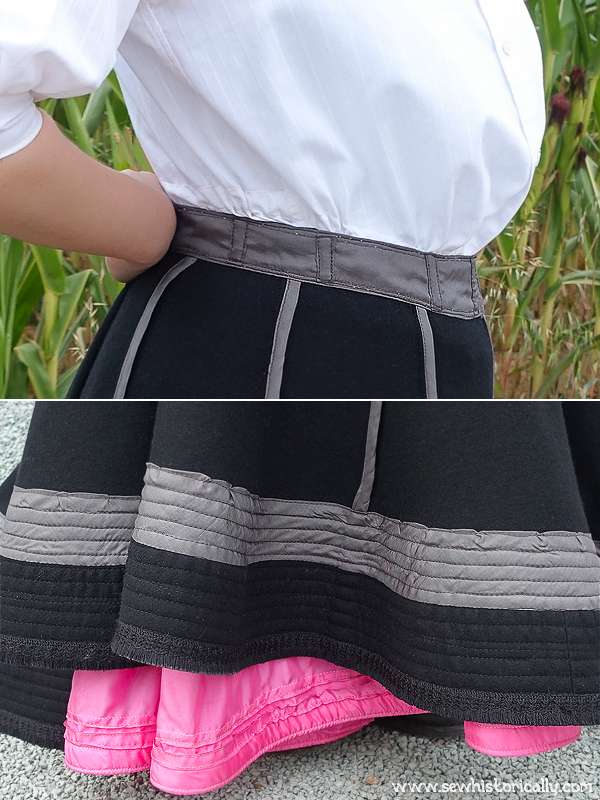
Brush Braid & Velvet Hem Facing
Because Edwardian skirt were long and usually trailed on the ground, it was necessary to protect the hem from fraying. The hems of 1900s wool skirts either had mohair brush braid or a cotton or silk velvet facing at the inside hem.
Back Closure
Bodices of expensive Edwardian dresses – like lace lingerie dresses and silk evening dresses – usually closed at the back. This was used to show that you could afford a maid to dress you!
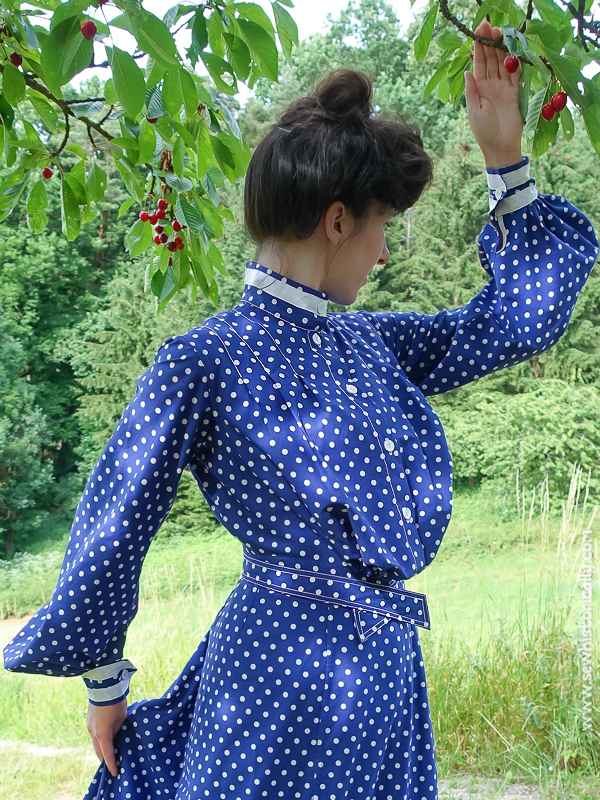
Front Closure
On the other hand, everyday dresses and dresses for housework – like cotton wash dresses, house dresses or wrappers – mostly had front closures. This made it easier dress yourself.
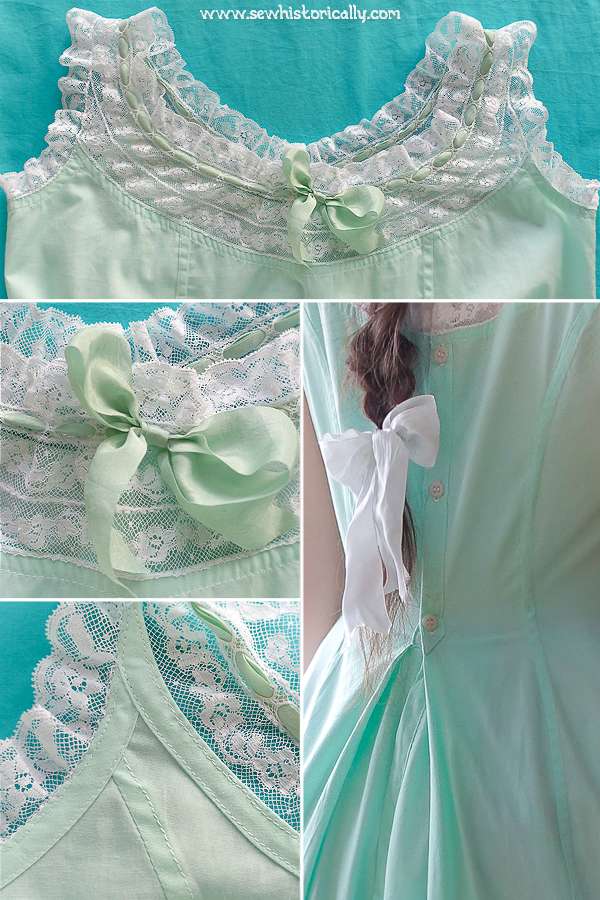
Flat Felled Seams
The flat felled seam seems to have been one of the most popular seams in the Edwardian era. It was used on underwear and tailored cotton and wool dresses. The flat felled seam is a tidy flat seam with no raw edges on the wrong side. The seam doesn’t become distorted in the wash and is also is easy to iron.
Separate Bodice & Skirt
Early Edwardian dresses usually had a separate skirt and bodice (both were made of the same fabric). This probably made the dress is easier to wash and iron.
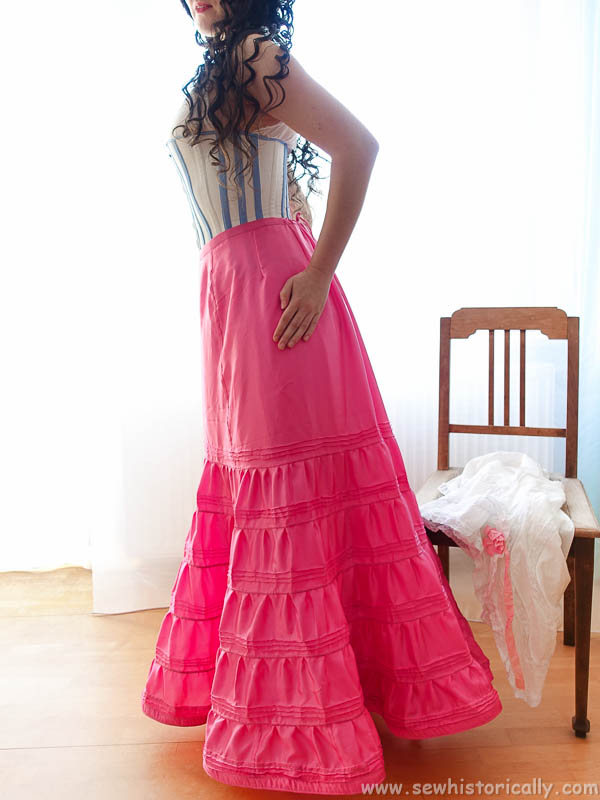
Pintucks
Underwear in the Edwardian era often featured pintucks. Pintucks were non only used to embellish but also to stiffen the undergarment. That’s why pintucks were usually used on the hem of petticoats and on the back of camisoles and slips. On the petticoats, pintucked hems helped support the wide flaring Edwardian skirts. And pintucks at the back of camisoles and slips kept the back flat and wrinkle-free.
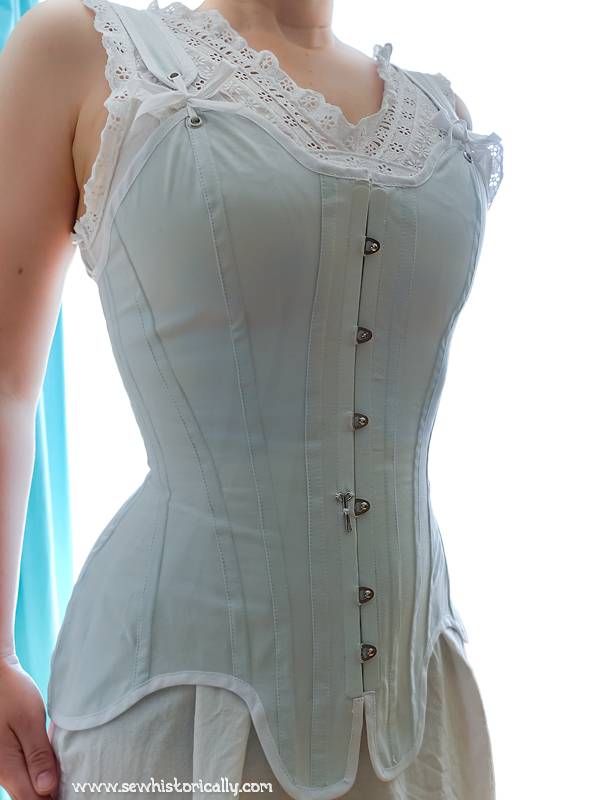
Corset Hook
Edwardian corsets often had a hook or dagger in the front. This was used to keep the dip waist of Edwardian skirts in place (the waistband of the skirt was slipped under the hook): down in the front and up in the back.
Hook & Eye Connection
To keep the blouse or bodice tucked in and the dip waist skirt up in the back, Edwardian skirts and bodices were usually connected at the center back: either with hooks & eyes or with buttons & buttonholes.
‘Sew buttonholed rings at the back of the waist belt […] If two are used, each ring should be an inch and one-eighth from the center back. Or, one can be placed at the center of the back, with the others two inches apart. Hooks are sewed with the same spacing to the inside of the skirt belt. Do not use hooks any larger than neccessary to fit into the rings. If rings are not procurable, ordinary eyes may be substituted.’ (The Dressmaker, 1916)